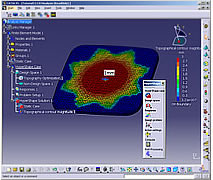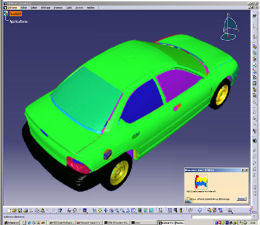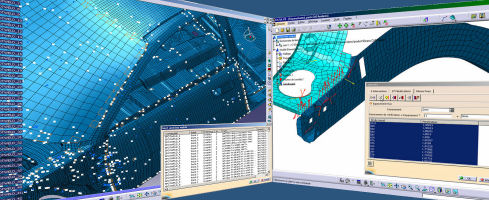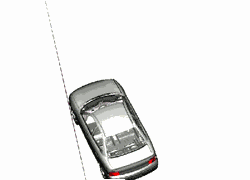Latest News
August 22, 2007
By DE Editors
Altair Engineering, Inc. (Troy, MI) has announced HyperCrash/CATIA, calling it “the first effective crash workbench” for automotive crash engineers and “the first crash environment integrated” into Dassault Systemes’s (Paris, France) CATIA V5 design system.
 HyperCrash/CATIA is said to reduce cycle time between design and finite-element analysis dramatically due to the associativity between geometry and the crash model, which allows the updating of crash analysis data whenever the geometry changes.
HyperCrash/CATIA is said to reduce cycle time between design and finite-element analysis dramatically due to the associativity between geometry and the crash model, which allows the updating of crash analysis data whenever the geometry changes.
HyperCrash itself is a preprocessing environment that automates the creation of models for crash analysis and safety assessments by such solvers as LS-DYNA (Livermore Software Technology; Livermore, CA) and PAM (ESI-Group; San Diego, CA) as well as Altair’s RADIOSS. It includes a set of utilities for crash and safety-modeling tasks such as part replacement and positioning, dummy positioning, and seatbelt routing. HyperCrash/CATIA serves to fully integrate HyperCrash within the CATIA V5 architecture.
 With HyperCrash/CATIA, you have the ability to set up and create crash models – including mesh generation—for RADIOSS analysis within CATIA V5, eliminating the need to leave your CATIA. Instead, once you perform a crash analysis inside of CATIA V5, you can then move directly into the company’s RADIOSS solver. RADIOSS technology, acquired by Altair with its purchase of French developer Mecalog Group last year, provides explicit and implicit finite-element technology for simulating mechanical, structural, fluid, and fluid-structure interaction phenomena for quasi-static and dynamic loading events.
With HyperCrash/CATIA, you have the ability to set up and create crash models – including mesh generation—for RADIOSS analysis within CATIA V5, eliminating the need to leave your CATIA. Instead, once you perform a crash analysis inside of CATIA V5, you can then move directly into the company’s RADIOSS solver. RADIOSS technology, acquired by Altair with its purchase of French developer Mecalog Group last year, provides explicit and implicit finite-element technology for simulating mechanical, structural, fluid, and fluid-structure interaction phenomena for quasi-static and dynamic loading events.
With HyperCrash/CATIA, you set all crash options directly on your MCAD model, which maintains the link between your design and the finite-element models. When you modify your MCAD design, your changes are applied to the linked finite-element model’s parts automatically. Additionally, your crash data can include nonlinear material properties in a dynamic database.

Features provided by HyperCrash/CATIA include contact resolution, model checker, and connection management tools as well as a modeling system for spot welds. The latter allows up to five sheets to be connected, compared to two sheets with CATIA alone. HyperCrash/CATIA manages the mass of inertia property transfer from CAD entities to the finite element model, and it automatically assembles the necessary model components based on a selected load case, such as frontal or side impact.

HyperCrash/CATIA is part of the HyperWorks suite of CAE solutions. It requires separate usage licensing. Click here to download a PDF brochure on HyperCrash. Click here to schedule a WebEx demo of HyperCrash with Altair Engineering.
Click here to go to the main page on HyperCrash/CATIA.
Subscribe to our FREE magazine, FREE email newsletters or both!
Latest News
About the Author
DE’s editors contribute news and new product announcements to Digital Engineering.
Press releases may be sent to them via [email protected].






